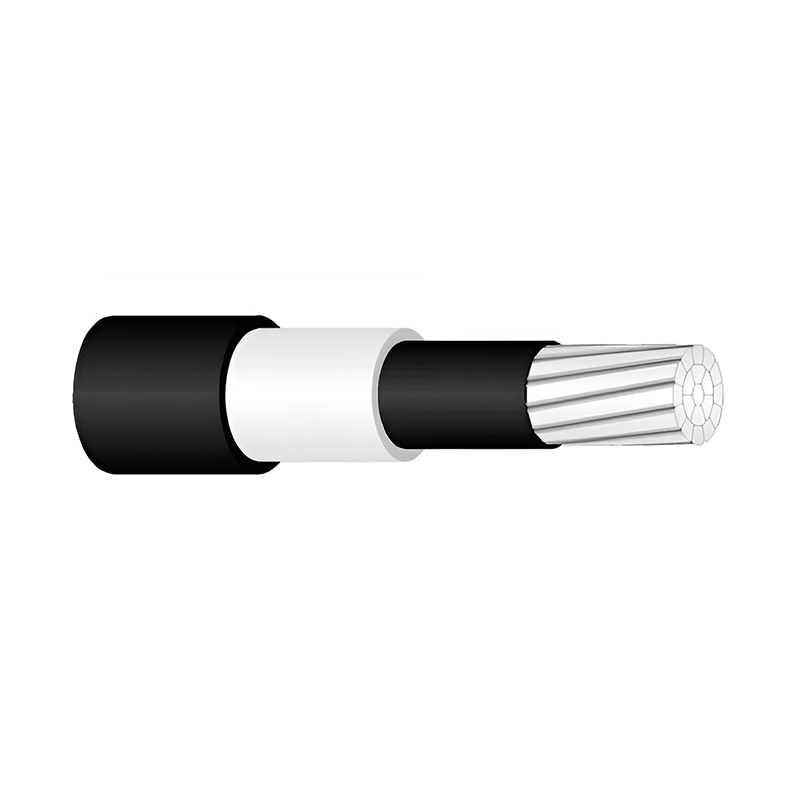System hardening has gotten a lot of attention over the last decade or so. News reports of large storms (ice storms, hurricanes, blizzards, etc.) hitting population centers and wiping out electric distribution infrastructure have had significant effects on not only reliability, but public safety and disruption to everyday life. Storms or high winds can knock power lines to the ground, causing outages which may be extended depending on the severity of the storm. Safety concerns are also heightened since the downed lines may lie on the ground yet still be energized. For mega storms, this poses a great challenge to utilities since they can’t possibly get to all of the critical repair locations in zero time. System hardening strives to reduce the number of problem spots, and also increase the safety of residents while they are waiting for trouble crews to arrive and put the lights back on.
Aerial Spacer Cable utilizes heavily covered conductors, unshielded and nontensioned, hung on insulating spacers, and attached to a messenger wire every thirty feet. The covered conductors have sufficient insulting material to limit the surface charging current in the case of incidental or momentary contact. The design goal at 15 kV class is to limit the surface current to 1/3 mA, which is insufficient to operate a protective device (fuse, recloser, relay) in the case of momentary contact with a tree or other partially grounded object, and, from a safety perspective, well below the fibrillation threshold of the human heart. The spacers at 15 kV are about 12 inches wide, so the vertical and horizontal space required for the line is vastly minimized when compared to a bare wire construction. The messenger is the mechanical support member. It holds the phase conductors up, acts as a shield wire, in some cases the system neutral, and protects the phase conductors from anything that may fall on the bundle from above (trees, limbs, light poles, etc.). It is made of Alumoweld (AW) or Alumoweld Aluminum (AWA) in order to take advantage of the improved corrosion resistance. Low Voltage Power Cables

Standard system hardening techniques include pole upgrades (more robust or even steel poles), tree trimming, line inspections, loop schemes, selective undergrounding, monitoring and smart grid (to hasten fault location and system restoration). However, additional system hardening techniques in the form of switching from bare wire construction to Spacer Cable System construction can have a massive effect on improving system reliability.
What are we hardening the system for? Various studies have shown that the percentage of distribution system outages related to trees, animals, and lightning, is somewhere between 66% and 90%. One study showed that lines converted to spacer cable had a tree related fault reduction of 90%, with animal related fault reduction of 76% and lightning related fault reduction of 71%.
While tree trimming is imperative, to keep a clean right-of way for lineworkers to perform maintenance safely, it is also costly, has a negative environmental impact, and is hugely unpopular with ratepayers. Utilities can’t get permission to cut trees, but then get negative press and lawsuits for tree related outages after a major storm. Spacer Cable systems allow for reductions in tree trimming by almost 80%, so the canopy is preserved, reliability is improved, aesthetics are enhanced, trouble calls are almost eliminated, and costs are reduced.
A new category of storm hardening has emerged over the last several years, and it relates to wildfires. Trees can blow into powerlines, and, if dry enough, can ignite, and lead to horrendous wildfires. Similarly, bare wires can become dislodged from their pole attachments and fall to the ground. If there is dry brush or other fuel on the ground, ignition can occur. Lastly, a bare wire line can fall to the ground, and even if de-energized, the bare wire can hit a rock and throw a spark, which can cause ignition. The use of Spacer Cable prevents these scenarios. There is not enough current on the jacket of the covered conductor to ignite, and, if the line falls to the ground, the polymeric jacket will not throw a spark. Many utilities across the Western US are converting bare wire systems to covered conductor systems in the attempt to mitigate any possibility of wildfire ignition.

Covered Conductor So, we can’t possibly design for every conceivable storm, but we can beef up (harden) the T&D facilities so that the possibility of an outage or infrastructure damage beyond repair is minimized. A viable, reliable, safe, and cost-effective strategy to achieve this goal is to utilize Aerial Spacer Cable.